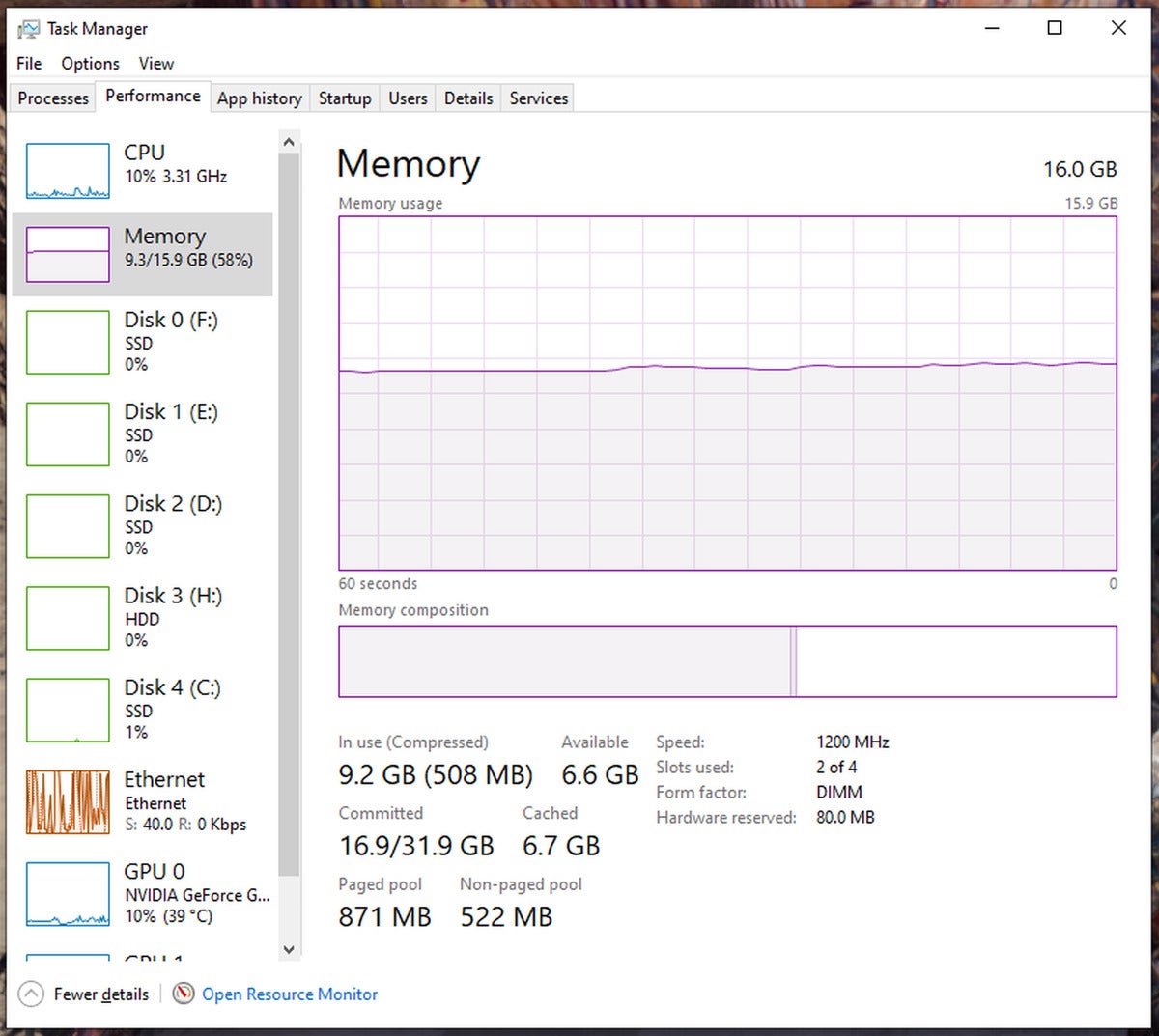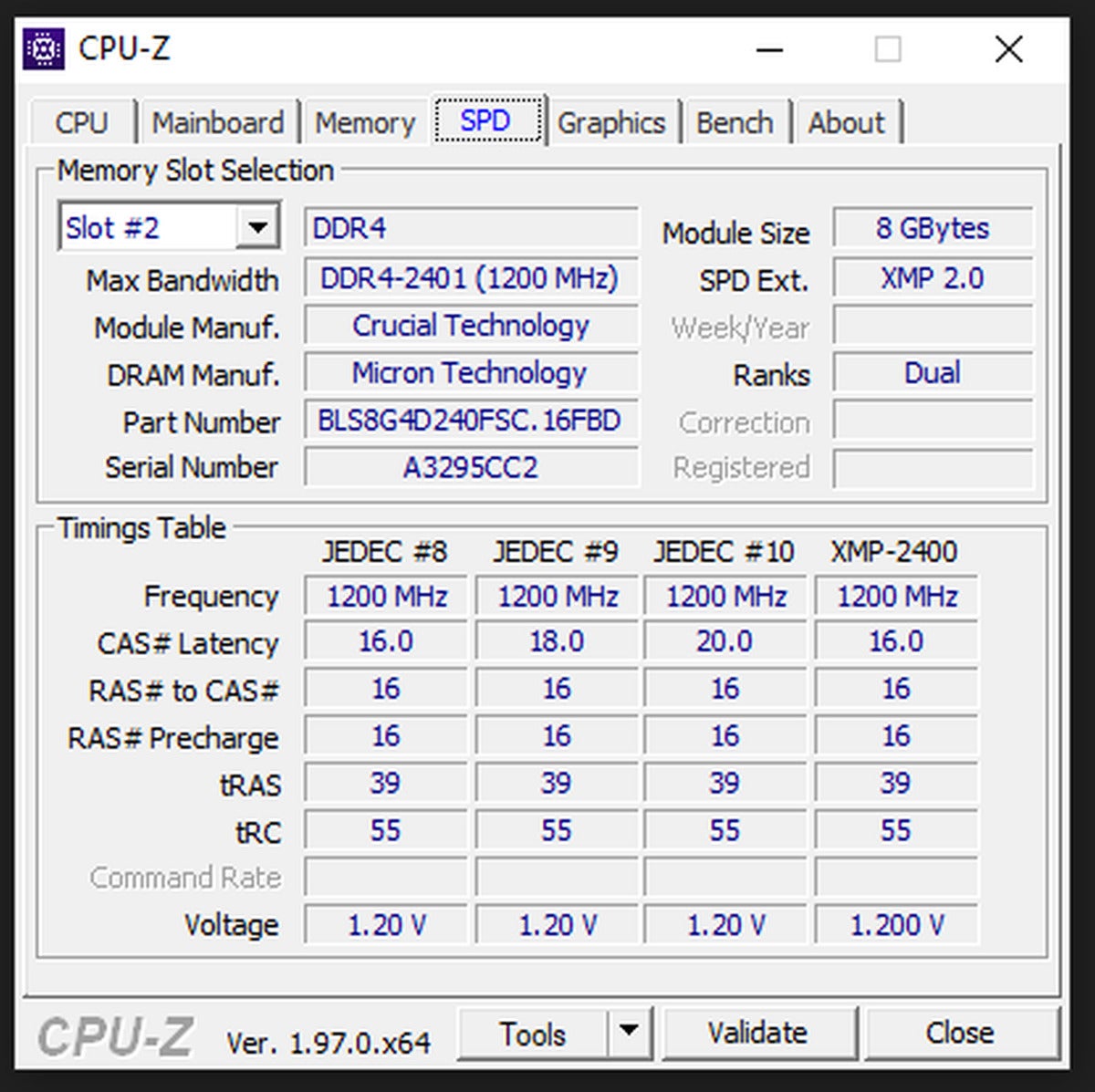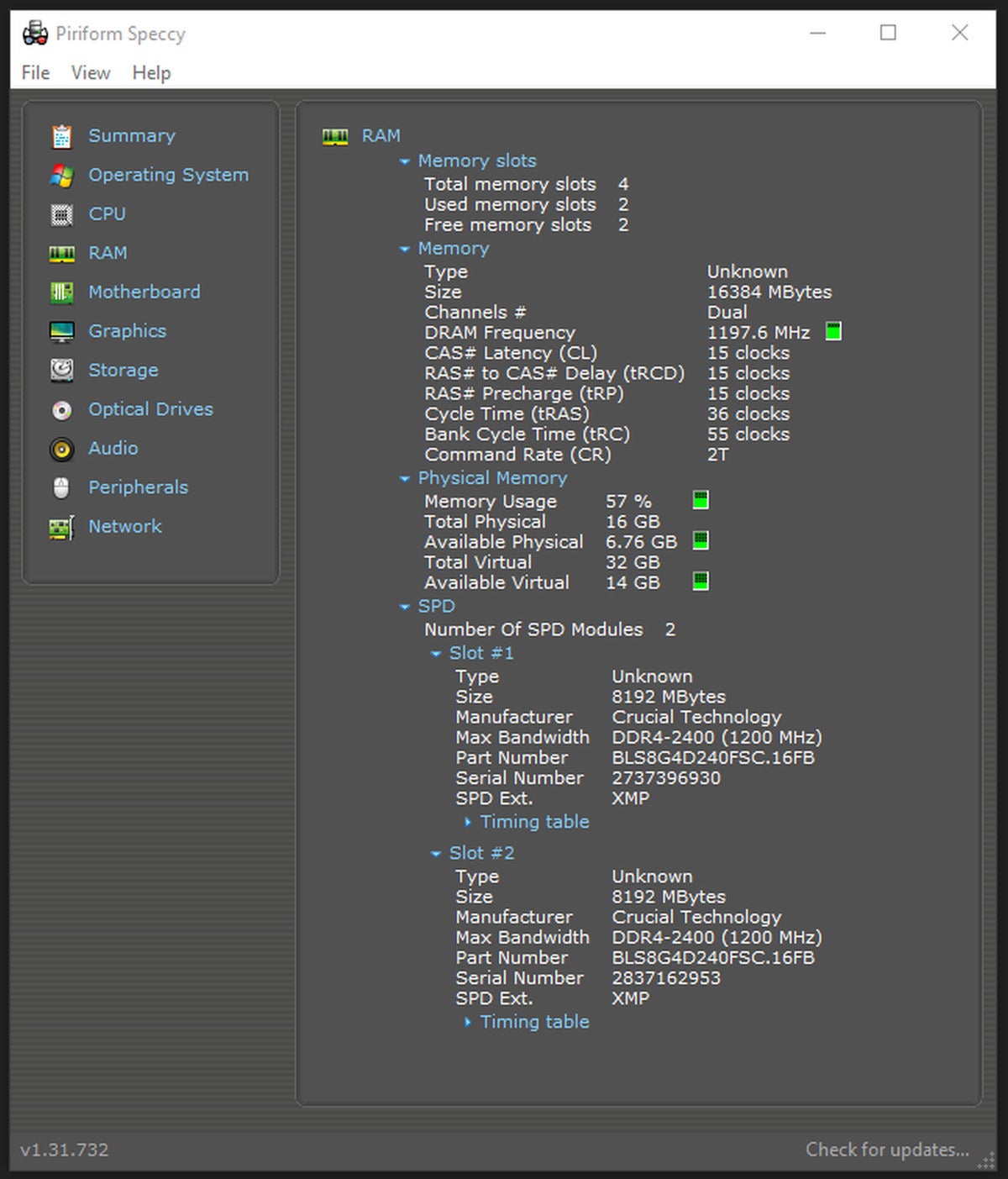How to tell what kind of RAM you have - prudhommeeaddelartion
For a very long time, the most common path to improving your PC's performance has been through upgrading the RAM. RAM stands for "stochastic access memory" and it's effectively the component of your PC that is keeping rail of what your computer is currently working happening. When RAM is limited, your PC has to keep that electric current information stored somewhere else, which tail end dramatically slowly pile your workflow and incumbrance times. This is particularly notable in computationally heavy projects, such as video recording encryption and high-superior art creation.
Whether you're looking to rising slope or you're looking to harvest the RAM from one PC to use in other, it helps to make out what kind of RAM your system is using. There are a handful of ways to figure that out!
In Windows 10
You can come up basic information nearly your RAM through your system's About page and direct the Functioning tab connected your Chore Manager.
 Kevin Casper/IDG
Kevin Casper/IDG Here are two simple methods to access the About page:
- Press the cardinal combination Win + Pause/Break
- Type "About your Personal computer" in the Windows Start menu search
 Kevin Casper/IDG
Kevin Casper/IDG To access the Task Manager, here are three simple options:
- Press the key combination Ctrl + Shift + Run
- Insistency the key combination Ctrl + Alt + Delete and select "Task Manager"
- Type "Task Managing director" in the Windows Head start menu hunt
These two methods will provide you with the most simplistic view of your PC's RAM information, primarily showing how much RAM you currently sustain, along with some RAM speed info. If this isn't adequate information for what you're looking to do, and so you may want to check impossible the Windows Management Instrumentation command-line utility-grade, or wmic.
 Kevin Casper/IDG
Kevin Casper/IDG In order to use wmic, you indigence to unconstricted a Command Prompt window, which is quickly done by typing "cmd" into the Windows Start computer menu research. Once there, you can use a "wmic MemoryChip get" command to typically pull up the information you'Re looking.
You can find a comprehensive set of properties to include connected your "wmic MemoryChip beget" command here, but the pursuing should cover the practical bases for most RAM identification inevitably:
wmic MemoryChip get MemoryType, Capacitance, Speed, Configuredclockspeed, DeviceLocator, FormFactor, Manufacturer, Serialnumber, Partnumber
This will provide a table with the following information, if it's available:
- MemoryType will report back a enumerate that aligns to a particular "type" of RAM module. 20 means information technology's DDR memory. DDR2 is 21. DDR3 is 24. DDR4 is 26. Sometimes, this may show a 0. If so, you'll want to use "SMBIOSMemoryType" as an alternative.
- Capacity will present the raw byte time value of the Force's store capacity, so something like 8,589,934,592 will be for an 8GB RAM mental faculty.
- Speed is the supported storage accelerate value that your Random-access memory module indicates it can hold, which is typically anywhere betwixt 800 and 3200.
- Configuredclockspeed relates to the speed at which your RAM is currently configured to be running at.
- DeviceLocator will tell you which physical expansion slot the RAM faculty is plugged into on your system's motherboard.
- FormFactor is the physical shape type of the RAM module. This will typically represent the number 8 for DIMM modules found on screen background PCs or the number 12 for laptops' SODIMM forms.
- Manufacturer indicates an known manufacturing business of the RAM module. This may she up every bit Unknown sometimes.
- Serialnumber leave give you the hardware consecutive number for that specific stick of RAM, which is typically only relevant when dealing with the manufacturer for troubleshooting purposes.
- Partnumber provides the manufacturer's posture number for that particular RAM faculty, which can be very useful with the help of a Google research to identify the RAM stick you have and whether or non you can purchase IT again.
Additional software options
Much of the above information is also useable with the facilitate of some third-political party software, such As CPU-Z and Speccy.
 Kevin Casper/IDG
Kevin Casper/IDG In CPU-Z, you'll want to use the "Remembering" and "SPD" tabs to imag information about your RAM. Retentivity will show you retentivity type and new relative frequency information. The SPD tab, which stands for "serial front find," provides information related to the RAM modules themselves including the manufacturer and part number information.
 Kevin Casper/IDG
Kevin Casper/IDG In Speccy, you'll want to work to the "Jam" view from the larboard card. In thither, you should rule virtually wholly of the RAM and retentiveness information you'd need. You may demand to spread out the "SPD" drop-down in order to get more specific information about the Pound depending on what you're trying to encounte.
In Linux
You can find virtually all of the data shown in a higher place via your Linux terminal by using the following command:
- sudo dmidecode —type memory
This should provide a sorted list of information about your memory devices, aka your RAM, including size, types, and manufacturer information.
Physical RAM module
Most consumer RAM modules will go with a tag to nam the case of RAM IT is. Typically, these labels will either be a pricker practical now to the stick of RAM, engraved onto the fancy heat broadcaster on high-performance modules, or whitethorn be printed directly onto the add-in. In these cases, you'll typically obtain the part number, which you canful then refer with your favorite search engine to figure forbidden the respite of the specs. If you seat't locate a label or identifier anyplace, and then it Crataegus oxycantha be prudent to use one of the methods delineate above instead.
These options should help you fig out what RAM your PC is exploitation. If you'Ra looking for to upgrade, be sure that you're getting the same type and configuration factor of RAM, because you can't directly swop out DDR3 for DDR4 RAM without having to likewise replace your motherboard. For many data on upgrading RAM, come across our guide on How to set u new remembering in your PC.
Source: https://www.pcworld.com/article/395053/how-to-tell-what-kind-of-ram-you-have.html
Posted by: prudhommeeaddelartion.blogspot.com


0 Response to "How to tell what kind of RAM you have - prudhommeeaddelartion"
Post a Comment